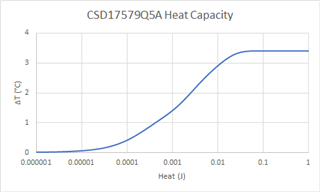Tool/software:
As I want to get the time constant of the MOSFET. I need to get the thermal capacity & thermal conductance.
I think the thermal conductance is the reciprocal of thermal impedance(Probably junction to ambient).
And how to get thermal capacity, from the pulse current capability?
Thanks in advance!


